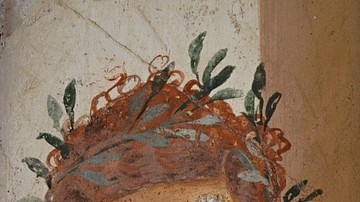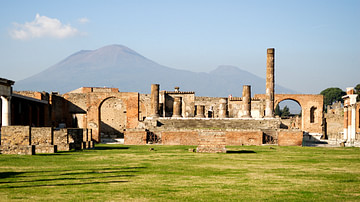Video
About the Author
Cite This Work
APA Style
Macquire, K. (2021, October 03). The Destruction of Ancient Pompeii. World History Encyclopedia. Retrieved from https://www.worldhistory.org/video/2663/the-destruction-of-ancient-pompeii/
Chicago Style
Macquire, Kelly. "The Destruction of Ancient Pompeii." World History Encyclopedia. Last modified October 03, 2021. https://www.worldhistory.org/video/2663/the-destruction-of-ancient-pompeii/.
MLA Style
Macquire, Kelly. "The Destruction of Ancient Pompeii." World History Encyclopedia. World History Encyclopedia, 03 Oct 2021. Web. 03 Apr 2025.







